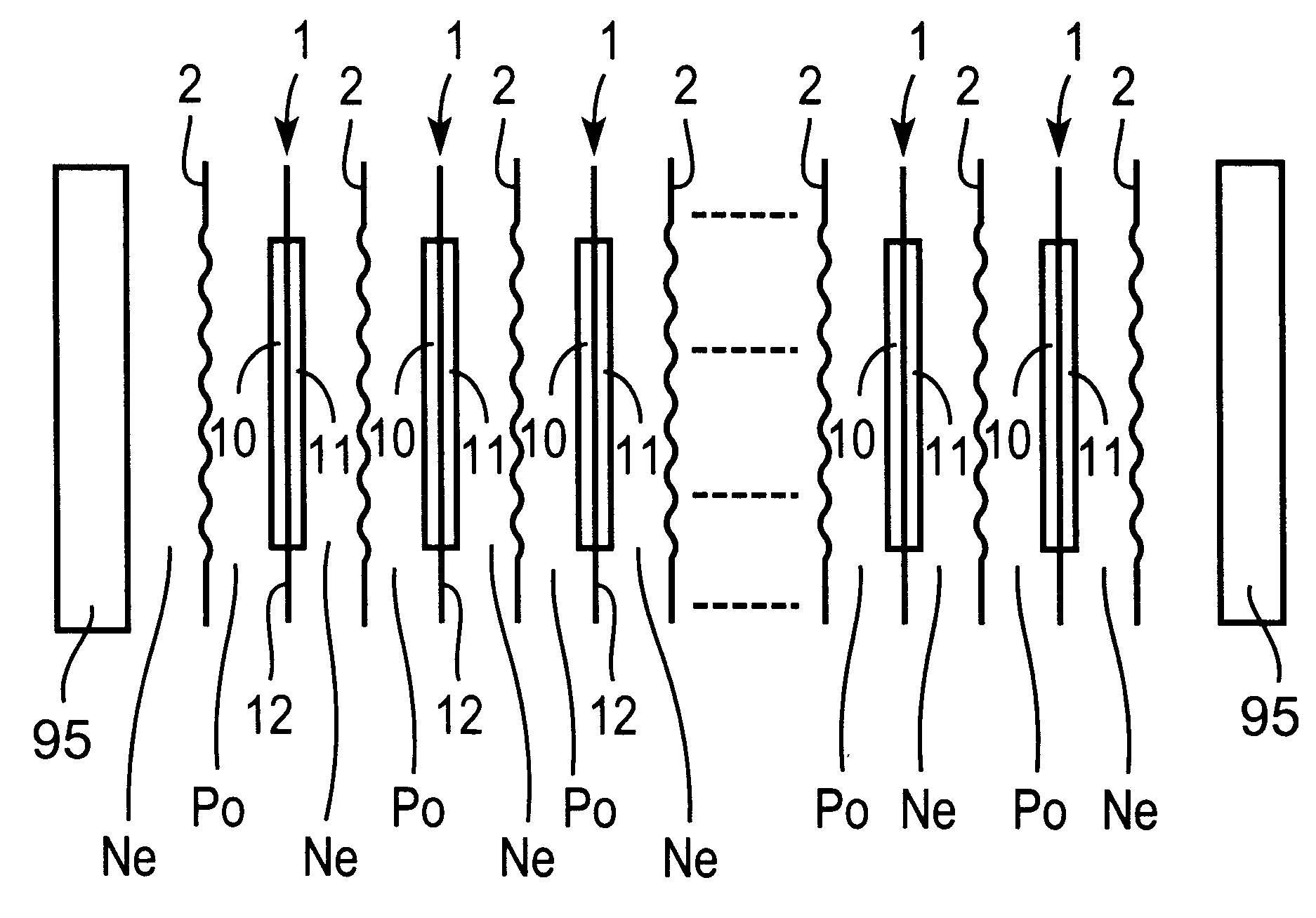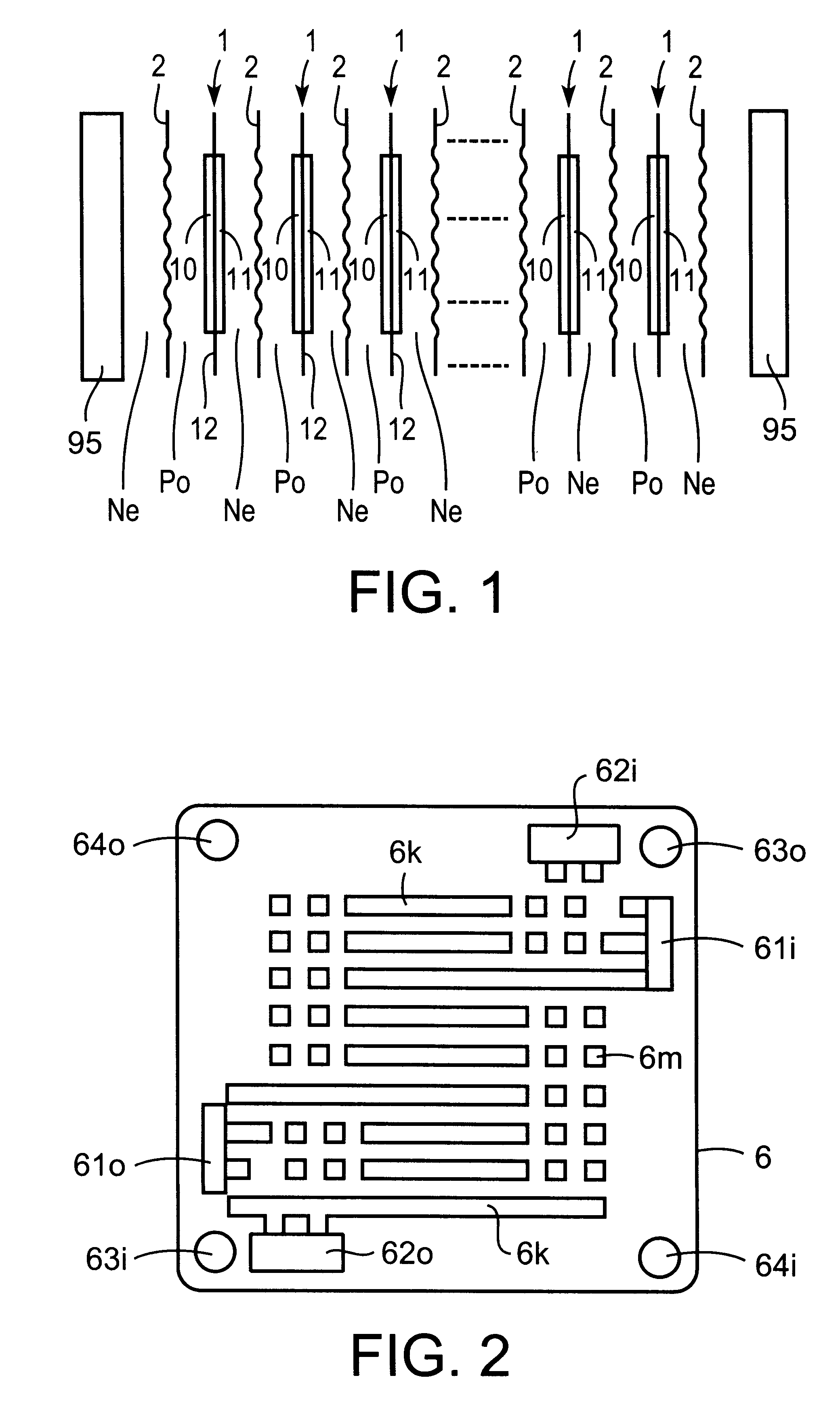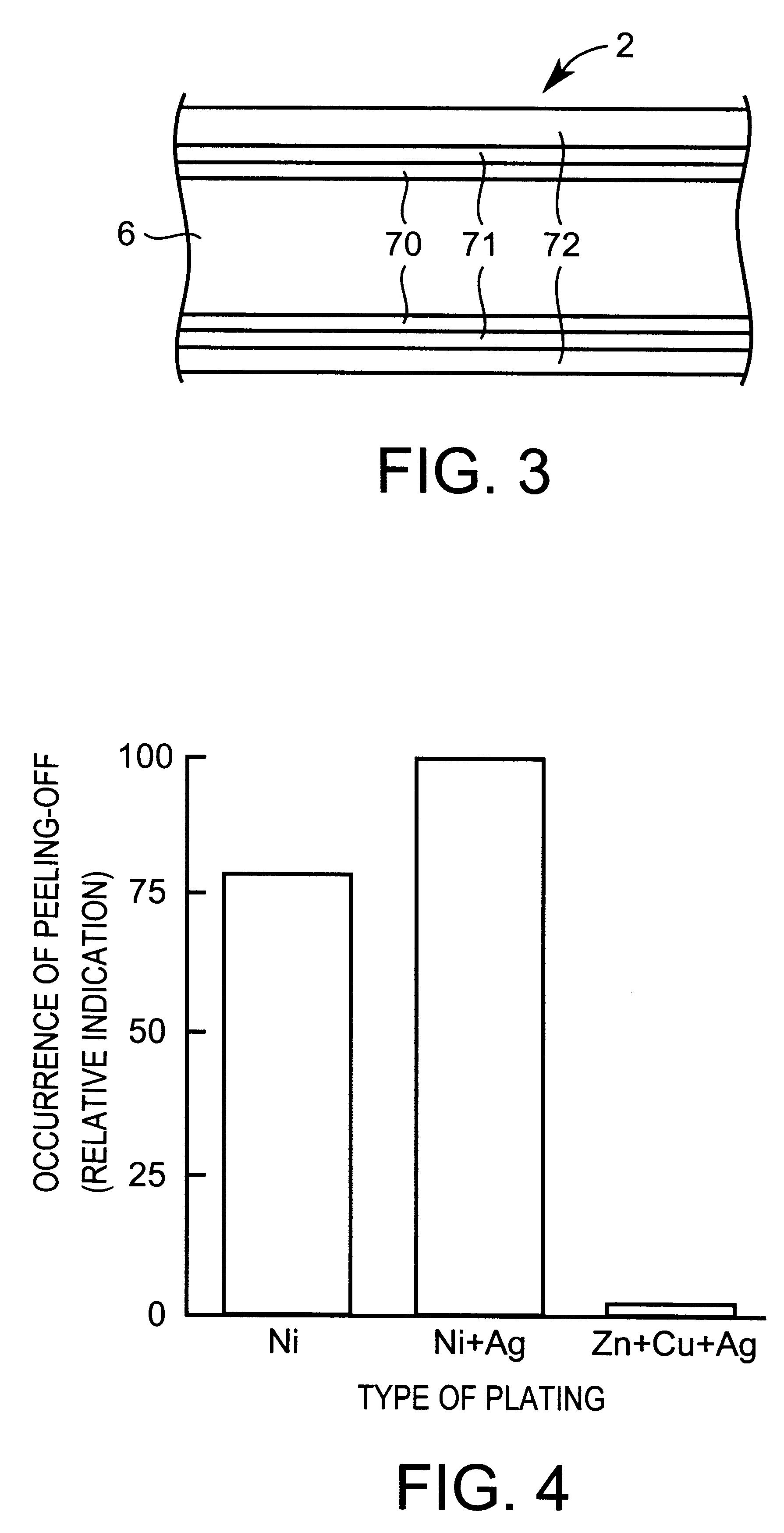Fuel cell and separator for fuel cell
a technology of separator and fuel cell, which is applied in the direction of cell components, electrochemical generators, soldering apparatus, etc., can solve the problems of restricting the size reduction of the fuel cell, the separator formed of titanium, and the separator formed of carbon materials, so as to suppress corrosion and deterioration of the separator, and reduce the weight
- Summary
- Abstract
- Description
- Claims
- Application Information
AI Technical Summary
Benefits of technology
Problems solved by technology
Method used
Image
Examples
examples
Referring to the drawings, embodiments of the present invention, as applied to a polymer solid electrolyte fuel cell, are explained.
FIG. 1 schematically shows a layered structure of the polymer solid electrolyte fuel cell.
Referring to FIG. 1, plural unit cells 1 are arrayed in juxtaposition at a pre-set interval between outer frames 95, 95. Each unit cell 1 is made up of a positive electrode (anode, i.e., a "cathode" according to U.S. standard terminology) 10 and a negative electrode (cathode, i.e., an "anode" according to U.S. standard terminology) 11 constituting paired electrodes and a film-shaped polymer solid electrolyte membrane 12 exhibiting proton transmitting properties and which is sandwiched between the positive electrode 10 and the negative electrode 11.
As may be understood from FIG. 1, a separator 2 operating as an active material separator partitioning a negative electrode chamber Ne and a positive electrode chamber Po in a back-to-back relation. The negative electrode...
applied examples
FIG. 7 shows an applied example, in which a rubber layer 80 is layered integrally on the surface of the aluminum-based substrate 6, and a rubber layer 82 is layered integrally on the back surface of the aluminum-based substrate 6. The unit cell 1 is made up of a positive electrode 10 and a negative electrode 11, constituting paired electrodes, and a film-shaped high-molecular solid electrolytic film 12, exhibiting protonic transmission properties and which is sandwiched between the positive electrode 10 and the negative electrode 11. As may be understood from FIG. 7, the separator 2, functioning as a separator of the active material, defines the negative electrode chamber Ne and the positive electrode chamber Po in a back-to-back relation to each other. The negative electrode chamber Ne faces the negative electrode 11 and is fed with an active material of the negative electrode, such as a hydrogen-containing gas. The positive electrode chamber Po faces the negative electrode 11 and ...
PUM
| Property | Measurement | Unit |
|---|---|---|
| thickness | aaaaa | aaaaa |
| thickness | aaaaa | aaaaa |
| thickness | aaaaa | aaaaa |
Abstract
Description
Claims
Application Information
 Login to View More
Login to View More - R&D
- Intellectual Property
- Life Sciences
- Materials
- Tech Scout
- Unparalleled Data Quality
- Higher Quality Content
- 60% Fewer Hallucinations
Browse by: Latest US Patents, China's latest patents, Technical Efficacy Thesaurus, Application Domain, Technology Topic, Popular Technical Reports.
© 2025 PatSnap. All rights reserved.Legal|Privacy policy|Modern Slavery Act Transparency Statement|Sitemap|About US| Contact US: help@patsnap.com



